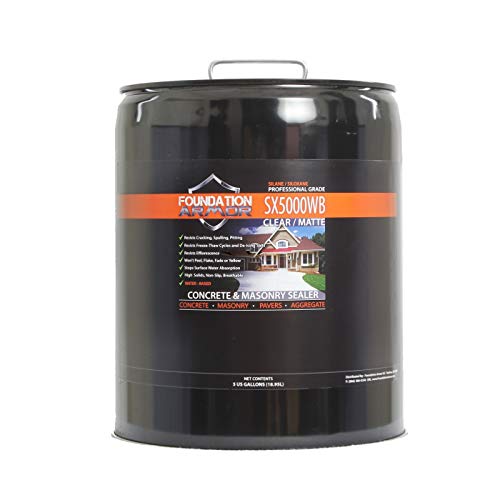How to Choose the Deck Sealer
The Ultimate Guide to Deck Sealers

- 1. The Ultimate Guide to Deck Sealers
- 1.1. Understanding Deck Sealers
- 1.2. Benefits of Deck Sealers
- 1.3. Choosing The Right Deck Sealer
- 1.3.1. Type of Deck
- 1.3.2. Sealer Type
- 1.3.3. Protection and Durability
- 1.3.4. Transparency and Aesthetics
- 1.3.5. Ease of Application
- 1.3.6. Budget Consideration
- 1.4. Application Process
- 1.5. Maintenance and Reapplication
- 1.6. Conclusion
A deck represents more than merely an outdoor area—it serves as an expansion of your home, offering a space for unwinding, socializing, and embracing nature. Nonetheless, decks endure continual exposure to the elements, resulting in wear, discoloration, and structural deterioration. This is where the significance of deck sealers becomes evident. A high-quality deck sealer not only enriches the deck's aesthetic appeal but also shields it from the adverse impacts of weather, foot traffic, and UV rays. Delving into the realm of deck sealers involves grasping their variations, application methods, advantages, and upkeep for optimal understanding.
Understanding Deck Sealers
Sealers for decks serve as protective layers that safeguard wooden surfaces from moisture, UV rays, and general wear. Their primary role is to prevent water damage, rot, mold, and mildew, thereby ensuring the deck's durability and visual appeal. There are two main categories of deck sealers:
- Water-Based Sealers: Known for their eco-friendly nature, these sealers offer a transparent, natural finish. They are convenient to clean, dry rapidly, and provide excellent UV protection. Water-based sealers are best suited for softer wood used in decks.
- Oil-Based Sealers: These penetrate the wood more deeply, offering enhanced defense against water damage and UV rays. They impart a rich color to the wood and typically have a longer lifespan compared to water-based alternatives. However, they might require more time to dry and could produce more fumes during the application process.
Benefits of Deck Sealers
Deck sealers provide a wide array of advantages that improve both the overall quality and durability of your deck:
- Protection: By shielding your deck from moisture, UV rays, and the wear of foot traffic, deck sealers actively prevent issues like rot, mold, and warping, thereby elongating the wood's lifespan.
- Enhanced Appearance: Sealers have the capacity to enhance the natural color and accentuate the wood grain, thereby contributing to your deck's beauty.
- Longevity: Consistent application and upkeep of a deck sealer can notably prolong your deck's lifespan.
- Increased Property Value: A well-maintained, sealed deck not only increases the appeal of your property but also serves as a valuable asset, attracting potential buyers.
Choosing The Right Deck Sealer
Choosing the right sealer is essential for preserving the wood, enhancing its appearance, and prolonging its lifespan. With a myriad of options available in the market, considering several key factors is vital in making an informed decision.
Type of Deck
The first step in selecting a deck sealer is to consider the type of wood your deck is constructed from. Various sealers are designed for specific types of wood, whether it's cedar, pressure-treated pine, redwood, or exotic hardwoods like mahogany or ipe. Each wood type has its unique characteristics and porosity, requiring different types of sealers to ensure proper protection.
Sealer Type
Deck sealers come in different formulations such as oil-based, water-based, and solid stains. Each type offers distinct advantages. Oil-based sealers penetrate deeply into the wood, providing excellent protection against moisture. Water-based sealers dry faster, have low odor, and are more environmentally friendly. Solid stains create a protective layer on the surface and are better for heavily weathered or older decks.
Protection and Durability
Consider the level of protection and durability needed based on the deck's exposure to elements. If your deck faces harsh weather conditions or heavy foot traffic, opt for a sealer that offers UV protection, mildew resistance, and high durability. This ensures the wood is shielded from the sun's damaging rays, moisture, and other external elements.
Transparency and Aesthetics
The aesthetic appeal of your deck matters. Some sealers provide a clear finish, allowing the natural beauty of the wood to shine through. Others come in semi-transparent or solid colors, enhancing the appearance of the wood while providing added pigment and UV protection. The choice depends on personal preference and the desired look for the deck.
Ease of Application
Consider the ease of application when choosing a deck sealer. Some sealers require multiple coats or meticulous application techniques, while others are easier to apply. Additionally, check if the sealer requires extensive preparation or if it can be applied to slightly damp wood, making the application process more convenient.
Budget Consideration
Budget is an important aspect when selecting a deck sealer. Prices vary based on the type, brand, and size of the sealer. While it's tempting to opt for cheaper options, quality should not be compromised. Consider the long-term benefits and overall value rather than just the upfront cost.
Application Process
Applying a deck sealer requires some preparation and a systematic approach to ensure maximum effectiveness:
- Preparation: Clean the deck thoroughly. Remove debris, mold, mildew, and any previous finish that might interfere with the sealer’s penetration. Use a pressure washer, deck cleaner, and sanding where necessary.
- Choosing the Right Time: Select a day with moderate temperature and low humidity for the application. Avoid days with rain or excessive heat to ensure proper drying.
- Application: Apply the sealer using a brush, roller, or sprayer. Work in small sections, making sure to back-brush or back-roll to eliminate puddles and ensure even coverage.
- Drying Time: Let the sealer dry as per the manufacturer’s instructions. Typically, it can take a day or two for the sealer to cure completely.
Maintenance and Reapplication
Keeping up with regular maintenance is essential to keep your deck in prime condition. Reapplication intervals, typically every one to three years, may vary based on the sealer used and prevailing weather conditions. It's equally important to conduct routine cleaning and inspections to detect any signs of wear, indicating the need for resealing.
Conclusion
Preserving your outdoor sanctuary relies significantly on the use of deck sealers. These sealers serve a dual purpose: shielding your deck from weather-related deterioration and improving its aesthetic charm. Selecting the appropriate sealer from the array of available types is contingent upon addressing your distinct requirements and preferences. It's vital to bear in mind that the proper application and consistent upkeep play pivotal roles in maintaining your deck's durability and inviting appeal as an enduring component of your home.











